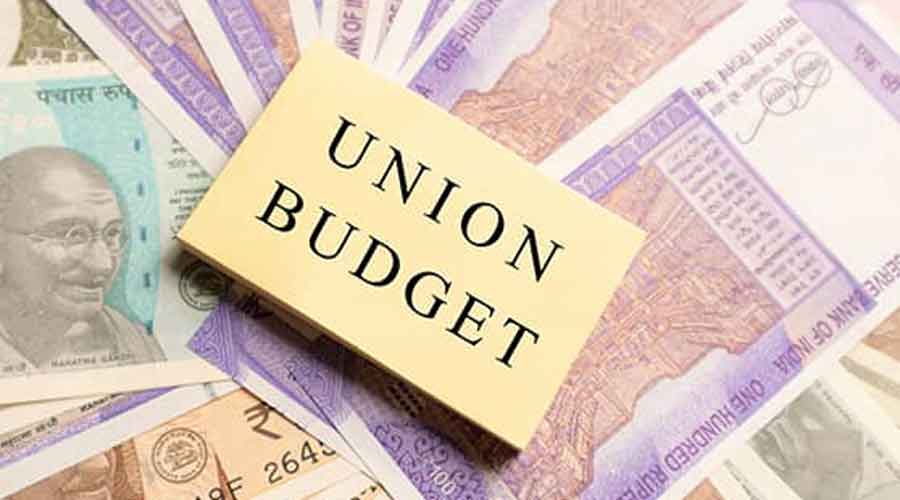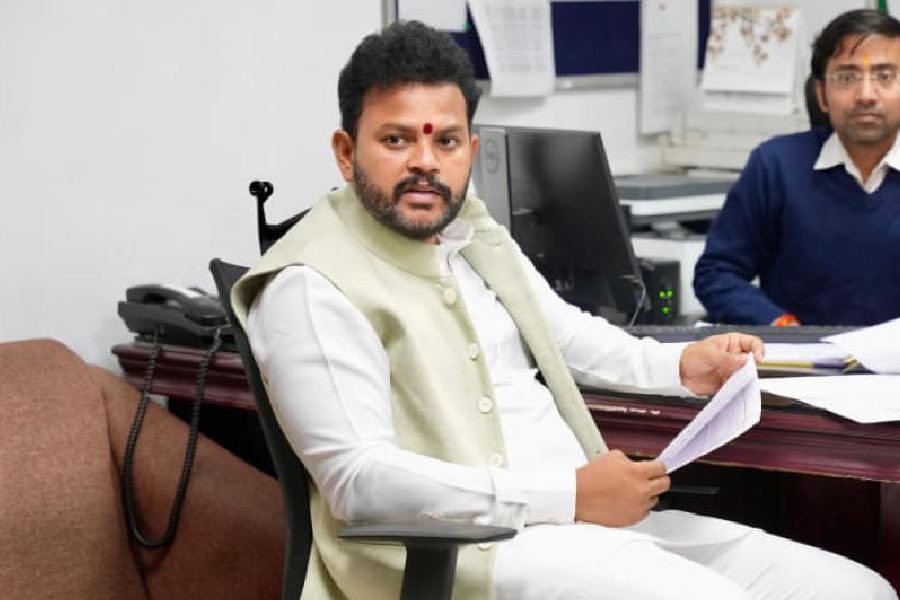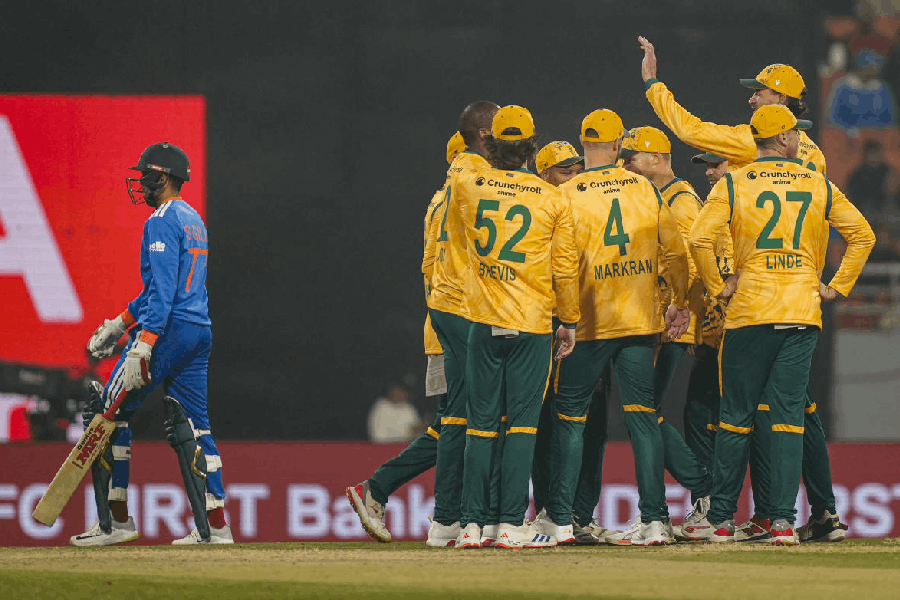Eminent economic professor Prabhat Patnaik reviews the budgetary measures in this dialogue with Subhoranjan Dasgupta, professor of human science.
Q: The Narendra Modi government has proposed a GDP growth of 8 to 8.5 per cent in the next fiscal. The Sensex has jumped 800 points in response to this rosy forecast. Do you think this is overly optimistic?
Patnaik: Certainly. There are internal and external reasons why this estimate is overly optimistic. The internal reason is that the real consumption expenditure in 2021-22 is still below that of 2019-20, which means the unutilised capacity in consumption goods would be greater today, even at a 2019-20 level of capacity. But since some addition to capacity has occurred in the interim even in these sectors because of the lagged realisation of decisions taken earlier, the capacity utilisation would be even less, and hence investment will now be quite negligible.
As a result, the current investment-led recovery cannot be sustained; investment will come down and drag consumption further down.
The external reason is the rise in world oil prices, now expected to reach even $100 a barrel. This would boost inflation in India, as the government will just “pass on” the higher oil prices and practise monetary and fiscal stringency against inflation.
Besides, the acceleration of inflation in the US is leading to a rise in interest rates there. This will make inflows of finance to cover our balance of payments deficit that much harder, leading to a fall in the external value of the rupee and a further boost to inflation here.
We have large foreign exchange reserves but they would scarcely protect us if financial inflows dry up. Our interest rates would be raised in such a situation, since import restrictions are out under the neo-liberal regime; this will further truncate recovery.
Q: What could be the real impediments to this government forecast?
Patnaik: In addition to higher inflation and the policy response to it that I just mentioned, there is an additional factor. If the balance of payments still remains problematic despite the rise in our interest rates, the Modi government may well go in for an IMF package. That would impose not just austerity but also a loss of autonomy in decision-making, as has happened over much of the third world.
One would have expected the government to anticipate all this and take measures to forestall them, such as bringing down inflation through a shift from indirect taxes on the poor to direct taxes on the rich. But this government appears unconcerned. One can only hope that India does not fall into this IMF loan abyss.
Q: One community that has reacted negatively and most forcefully are the farmers. The budget does not cater to their demand for a guaranteed minimum support price (MSP) for the commodities they produce. They have threatened another agitation. Has the budget really betrayed the farmers?
Patnaik: Yes, the farmers have been short-changed. Comparing 2021-22 (revised estimate) with 2022-23 (budget estimate), the fertiliser subsidy has been slashed by 25 per cent. The allocation for the PM Kisan scheme remains nominally unchanged, which means a fall in real terms. The procurement outlay at MSP has been slashed in nominal terms, and so on.
The government, when it repealed the three farm laws, did not give up its plans to corporatise agriculture. It is attempting this through other means, which is why it is avoiding any legislation guaranteeing MSP. There is an attempt now to use public-sector banks to tie up with corporate-owned non-banking financial companies (NBFCs), whereby the funds of the former would be disbursed through the latter.
The banks will predominantly bear the lenders’ risk while the NBFCs will decide whom to lend to and, hence, the pattern of land use, shifting it away from food grains towards crops demanded by the metropolitan rich. The SBI-Adani deal that is currently being pushed is an example of such an arrangement. The farmers are right to get peeved.
Q: Capital spending has increased by 35 per cent. It is going to reach Rs 7.5 lakh crore. But will the social infrastructure – health and education – be allotted the necessary amounts?
Patnaik: The problem today is the inadequate aggregate demand in the economy, not its composition. For boosting aggregate demand what matters is not just government capital expenditure but total government expenditure, and this is just 4.6 per cent higher than in 2021-22 (revised estimate). This means not only a fall in real terms but also a sharp fall in relation to the GDP. Government expenditure, far from being a stimulus for the economy, is being budgeted as a dampener.
Many were arguing before the budget that there should be a boost in total expenditure through larger social sector spending. This would have killed two birds with one stone: the economy would have revived and there would have been alleviation of distress. But the government did not follow that route.
Instead, health expenditure is slated to fall in real terms, and hence as a proportion of the GDP, and that too in the middle of a pandemic. Education expenditure is supposed to rise but as a proportion of GDP it will be the same in 2022-23 as in 2021-22 (revised estimate); and much of this is to promote digitisation which leaves poor children in the lurch.
Q: Will the government persist with its policy of privatisation? The privatisation of Air India has instilled new hope in this area.
Patnaik: Selling government assets to raise resources is actually no different from a fiscal deficit in its proximate macroeconomic effect. A fiscal deficit puts government bonds directly or indirectly in private hands, while selling assets puts government equity in private hands.
Put differently, a fiscal deficit means that the government borrows more from, say, banks, while selling government assets means that private buyers borrow more from banks for purchasing them. In either case, expenditure is financed by credit, and in either case financing such government spending gratuitously increases wealth inequality.
But the difference lies elsewhere: whether the enterprise is run in the interests of society or for boosting private profits. The Central Electronics Limited, a public-sector company enhancing the country’s technological capacity in critical areas, was sought to be sold to a real estate firm. The LIC, the only source of social security for millions, is being privatised to be run like any capitalist insurance business. Even the Air India sale has to be examined in terms of what happens to Air India’s extensive plots of land. Privatisation mostly typifies systemic corruption.
Q: The rate of unemployment has reached a post-independence peak (8 per cent). Has this budget taken specific measures to combat this?
Patnaik: Several factors underlie the current unemployment crisis: the neo-liberal regime including the post-2008 stagnation; Modi’s demonetisation and the GST, both of which decimated the petty production sector; and the pandemic. The starting point for intervention against unemployment today must be a stimulation of the overall economy. The budget does not do so. Indeed, the fiscal strategy being pursued of late by the Modi government acts precisely in the opposite direction.
This strategy gives tax concessions to the rich (expecting larger private investment) and restrains the fiscal deficit through indirect taxes, notably on oil, that fall mainly on the poor. Such indirect taxes, however, cause both inflation and, because inflation squeezes the real purchasing power of people, recession as well. It thus accentuates unemployment and poverty and reduces, instead of enhancing, private investment.
Q: During the last two Covid-hit years, 84 per cent families have seen their income fall, 4.6 crore people have slipped under the poverty line. In the Global Hunger Index, India’s position is a miserable 101 among 116 countries. Has the budget attended to this by serving the interests of the economically weaker sections, especially the lower middle class, jobless and workers?
Patnaik: While the country is afflicted with acute hunger, there are 90 million tonnes of food grain stocks with the government. What the government needs to do is put purchasing power in the hands of the people. This should have been the means of effecting an economic recovery, but the government’s fiscal strategy precludes this.
During the pandemic India did not take the minimum step of compensating through fiscal transfers the people rendered income-less --- which even the Donald Trump administration did in the US. Even now there should be an increase in government expenditure, either through transfers or social sector expenditure, financed by greater taxation of the rich, either through a wealth tax or a higher corporate tax, to alleviate poverty and hunger.
Q: Is this a ‘political’ budget? If yes, what is the pronounced political element in it?
Patnaik: One thought that in an election year the budget would do something, however small, for the people. But this did not happen. The government obviously thinks that promoting communal polarisation is enough to get votes from an increasingly hungry and poverty-stricken people even while its corporate backers are kept happy.
Q: Finally, has the budget taken any steps to lessen the cruel distance between the few rich and the innumerable poor?
Patnaik: None whatsoever. A two per cent wealth tax and a complementing 33 and 1/3 per cent inheritance tax imposed only on the top 1 per cent of the population can finance the institution of five universal economic rights: to food, employment, free education, free healthcare and non-contributory old-age pension. Overcoming destitution is feasible but it requires a reversal of the government’s perverse fiscal strategy.










